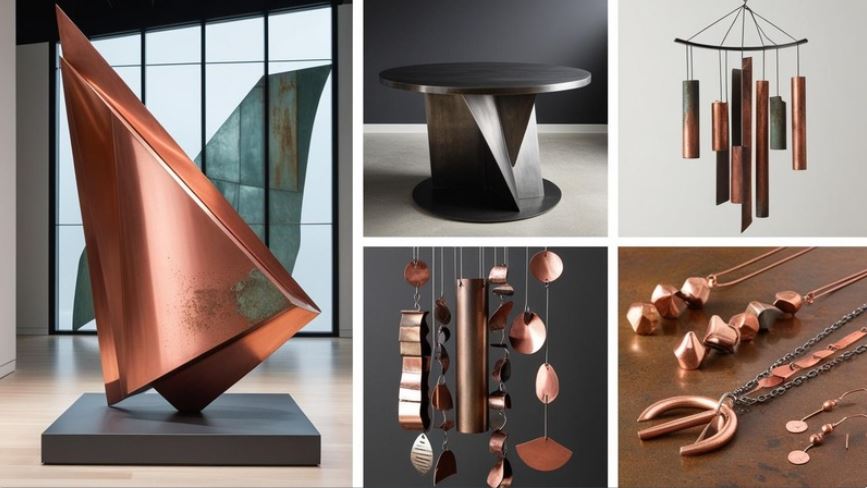Identifying different metals can be fascinating and, with a few simple tricks, can be done right at home. Whether you’re curious about what type of metal you have in your old tools, cans, or pipes, or just want to try some hands-on science, there are easy ways to figure it out without needing any fancy equipment. Here’s how you can identify common metals using physics, basic science, and everyday household items.
1. Check the Magnetism 🧲
One of the simplest ways to start is by using a magnet. Metals have different magnetic properties, and testing this can help you determine if a metal is ferrous or non-ferrous:
- Ferrous Metals (Magnetic): Iron and steel are ferrous metals that are strongly magnetic. If a magnet sticks firmly to the metal, it’s likely one of these.
- Non-Ferrous Metals (Non-Magnetic): Metals like copper, aluminum, brass, and stainless steel are non-ferrous, meaning a magnet won’t stick to them (although some stainless steels may have slight magnetism).
This test is easy and immediate – just grab any fridge magnet and start experimenting!
2. Examine the Color and Shine ✨
Different metals have unique colors and finishes, which can be a big clue:
- Copper: Has a distinctive reddish-brown color that often darkens to a greenish patina with age.
- Brass: Yellow-gold in color, brass has a slight shine and is commonly found in items like fittings or door handles.
- Aluminum: Lightweight with a silvery, sometimes dull finish, aluminum is often used in cans, kitchen foil, and lightweight frames.
- Stainless Steel: Silver in color and resistant to rust, it has a polished, smooth finish and can often be found in cutlery and kitchen appliances.
3. Test the Density with a Sink or Float Test 💧
If you have water and a container, you can explore metal density:
- Aluminum and Magnesium: These metals are much less dense than others and may float when compared to heavier metals.
- Copper and Brass: These are much denser metals and will sink quickly. This makes copper and brass easy to distinguish from lighter metals like aluminum.
4. Use Sound to Tell Metals Apart 🔊
The sounds metals make when struck can reveal their type:
- Steel and Iron: Produce a heavy, solid “clang” when tapped.
- Aluminum: Has a lighter, softer “ping” sound and feels less resonant.
- Copper and Brass: Give a more mellow, muted sound due to their softer, malleable structure.
Take a wooden or rubber hammer and gently tap the metal to see if you can notice any unique sounds. Just be cautious not to damage the metal or use too much force.
5. Do the Spark Test ⚡
This is a classic method and involves briefly grinding a metal (like against concrete or sandpaper) to see if it sparks:
- Iron and Steel: Produce bright, orange sparks when ground.
- Non-Ferrous Metals (Copper, Aluminum): Generally do not produce sparks, which can help distinguish them from ferrous metals.
For this, safety first! Make sure to wear protective glasses if trying this test and avoid using it on items you want to keep in good condition.
6. Try the Ice Test on Aluminum ❄️
Aluminum conducts heat quickly, so if you place an ice cube on it, the ice will melt faster than on most other metals. Try this with a few metal items at home, and you’ll notice that aluminum’s heat conduction will cause the ice to melt at a surprisingly fast rate!
7. The Scratch Test for Soft Metals 🪓
Some metals are softer and will scratch more easily:
- Copper and Aluminum: These are softer metals and can be scratched with a knife or nail.
- Steel and Stainless Steel: Harder and much tougher to scratch, these metals are durable and often used in building and construction.
By gently scratching the metal with something sharp, you can see if it leaves a mark, which can indicate its softness.
8. Using Vinegar to Test for Rust 🧪
A simple acid like vinegar can help you spot rust on iron or steel, as it reacts and begins to change color. If you suspect the metal may be iron or steel, apply a small amount of vinegar and let it sit for a few minutes:
- Iron and Steel: The vinegar will cause rust to form more visibly.
- Non-Ferrous Metals: Copper, brass, and aluminum won’t rust, but they may tarnish, especially copper, which may turn greenish when exposed to acid.
9. Look for Rust and Oxidation 🌧️
Finally, inspect the metal for signs of oxidation:
- Iron and Steel: Rusts with a reddish-brown color.
- Aluminum: Oxidizes with a powdery, white residue.
- Copper: Develops a greenish patina over time due to oxidation.
Oxidation can be a big clue, as each metal has a unique reaction to air and moisture.
Conclusion
Identifying metals using simple science and household items is both fun and educational. These techniques can give you insights into what metals you have on hand, and maybe even inspire you to recycle or repurpose them! Whether you’re sorting scrap or just curious about what’s in your toolbox, these easy tests make it simple to identify metals without special equipment.
Give these tricks a try, and you’ll be surprised at how much you can learn from just a magnet, water, and a few basic items around your home!


